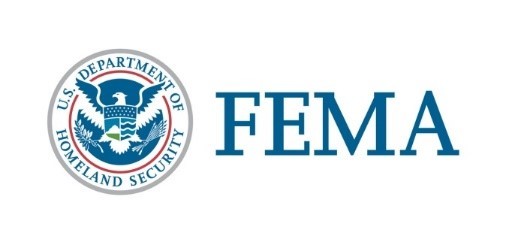|

U.S. Department of Homeland Security
Office of External Affairs
January 7, 2020
Stakeholder Advisory
FEMA Monitors Impacts from Puerto Rico Earthquake
- According to the United States Geological Survey, a 6.5 magnitude earthquake occurred at 4:24 a.m. local time, approximately 8.4 miles west-southwest of Ponce, Puerto Rico at a depth of 8 miles.
- Through its Joint Recovery Office in San Juan, regional office in New York City, and headquarters in Washington, DC, FEMA is deploying resources in support of the Commonwealth of Puerto Rico. FEMA leadership remains in close coordination with the Commonwealth and local officials to gain situational awareness and facilitate any needed support.
- Disaster response is a whole community effort and most effective when it is locally executed, state managed and federally supported. It takes everyone being prepared and neighbor helping neighbor.
- Expect aftershocks. These secondary shockwaves are usually less violent than the main quake but can be strong enough to do additional damage to weakened structures and can occur in the first hours, days, weeks, or even months after the quake.
- Follow instructions from local officials. Those in the affected areas should follow instructions from local officials and monitor local radio, TV stations or official social media accounts for updated emergency information.
FEMA Response for Puerto Rico Earthquakes:
- Liaison officers are being deployed to the impacted areas to coordinate with local officials.
- FEMA’s Response Operation Cell in Washington, D.C., and its Region II Regional Response Coordination Center in New York both activated this morning.
- The National Incident Management Assistance Team (IMAT) and the Region II IMAT have been deployed and are en route to Puerto Rico. Two additional National IMATs and seven regional IMATs remain available to respond to other contingencies throughout the United Sates.
- FEMA is also deploying an Urban Search and Rescue Incident Management Team and additional communications personnel through its Mobile Emergency Response Support (MERS) capabilities.
- Since 2017, FEMA has prepositioned life sustaining commodities throughout Puerto Rico to enable an even faster response to events in the Caribbean if needed and requested. The stock levels of these commodities are well above what was in place on-island in 2017, to include water and meals, generators, as well as tarps and other necessities.
- As with any emergency, FEMA will support municipality and Commonwealth officials upon their official request and if granted by the President.
- If Governor Vazquez makes a request for a disaster declaration by the President, FEMA and local government representatives will work with officials to determine the extent of impacts on individuals and public facilities, and the types of federal assistance that may be needed.
Potential for Response on Top of Ongoing Recovery:
- When natural disasters such as this morning’s earthquake strike, the first responders are local emergency and public works personnel, volunteers, humanitarian organizations and numerous private interest groups. They provide emergency assistance required to protect the public’s health and safety and to meet immediate human need.
- FEMA continues to support the government of Puerto Rico with their complex and ongoing recovery efforts from hurricanes Irma and Maria; and, to ensure everyone is better prepared for disasters that could impact the island, at all levels.
- As a result of the 2017 hurricanes, the vast majority of infrastructure throughout Puerto Rico was significantly damaged. Permanent restoration efforts are ongoing, and repairs are being made to meet current industry standards wherever possible.
- While repaired systems are in a more resilient condition than they were prior to the 2017 hurricanes, there is still more work to be done.
Earthquake Safety:
- Follow instructions from your local officials.
- Those in the areas affected by the earthquake are encouraged to monitor local radio, TV stations or official social media accounts for updated emergency information.
- During an earthquake, Drop, Cover and Hold On. Minimize your movements to a few steps to a nearby safe place. If you are indoors, stay there until the shaking has stopped and you are sure exiting is safe.
- People with mobility disabilities and cannot drop, should still cover and hold on. People who use wheelchairs should lock your wheels and not try to transfer during shaking.
- Everyone who is staying put should cover your head and neck with your arms or a pillow until the shaking stops.
- Help injured or trapped persons if it is safe for you to do so. Check on neighbors who may require assistance such as infants, children, older adults, people with disabilities and others with access and functional needs.
- Use the telephone only for emergency calls. Cellular and land line phone systems may not be functioning properly. The use of text messages to contact family is the best option, when it is available.
- Check for gas leaks. If you smell gas or hear blowing or hissing noises immediately move away from the area. If you know how to turn the gas off, do so and report the leak to your local fire department and gas company.
- For a list of shelters and other important information from local officials, visit www.manejodeemergencias.pr.gov or call the Puerto Rico Emergency Management and Disaster Administration Bureau at 787-724-0124 to find your nearest shelter.
- Additional earthquake safety and preparedness information is available at Ready.gov and Listo.gov
Please direct your questions to FEMA Office of External Affairs, Congressional and Intergovernmental Affairs Division at (202) 646-3444 or at FEMA-IGA@fema.dhs.gov.
####
FEMA’s mission is to help people before, during, and after disasters.
Follow FEMA online, on Twitter @FEMA or @FEMAEspanol, on FEMA’s Facebook page or Espanol page and at FEMA’s YouTube account. Also, follow Acting Administrator Pete Gaynor’s activities @FEMA_Pete.

|